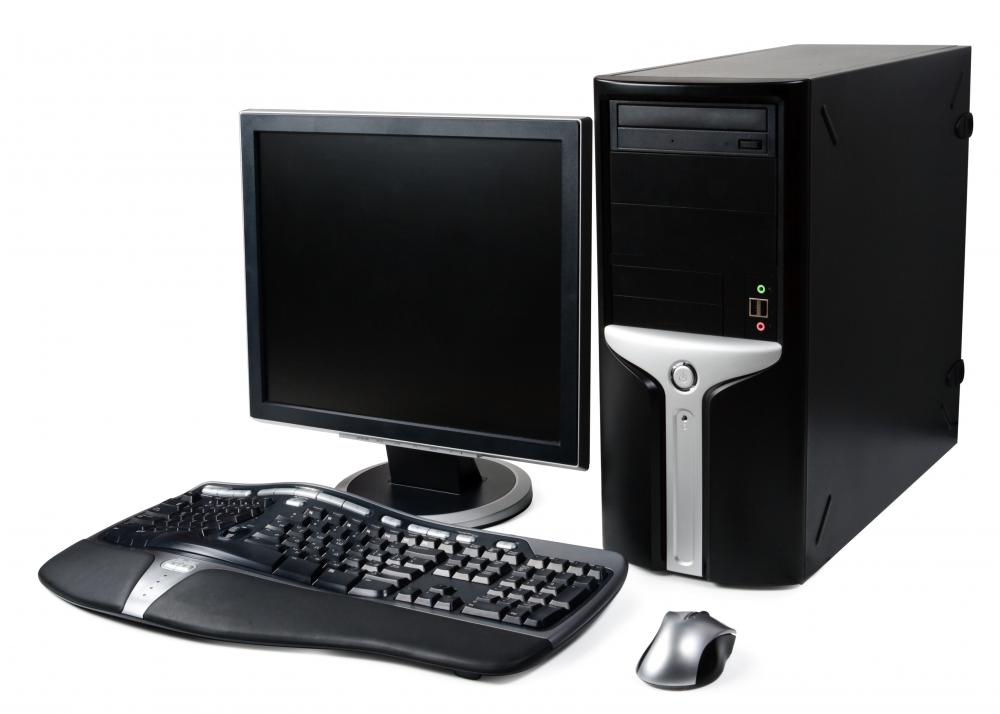
The History of Computers:
The first modern digital computer, the ABC (Atanasoff–Berry Computer), was developed between 1939 and 1942. The development team was led by John Atanasoff, a professor of physics and mathematics, and Clifford Berry, a graduate student. This machine utilized concepts still in use today: binary arithmetic, parallel processing, regenerative memory, separate memory, and computer functions. When completed, it weighed 750 pounds and could store 3000 bits (.4 KB) of data.
The technology developed for the ABC machine was passed from Atanasoff to John W. Mauchly, who, together with engineer John Presper Eckert, developed the first large-scale digital computer, ENIAC (Electronic Numerical Integrator and Computer). It was built at University of Pennsylvania’s Moore School of Electrical Engineering. Begun as a classified military project, ENIAC was designed to prepare firing and bombing tables for the U.S. Army and Navy. When finally assembled in 1945, ENIAC consisted of 30 separate units, plus a power supply and forced-air cooling. It weighed 30 tons, and used 19,000 vacuum tubes, 1500 relays, and hundreds of thousands of resistors, capacitors, and inductors. It required 200 kilowatts of electrical power to operate.
Although programming ENIAC was a mammoth task requiring manual switches and cable connections, it became the workhorse for the solution of scientific problems from 1949 to 1952. ENIAC is considered the prototype for most of today’s computers.
Another computer history milestone is the Colossus I, an early digital computer built at a secret British government research establishment at Bletchley Park, Buckinghamshire, England, under the direction of Professor Max Newman. Colossus I was designed for a single purpose: cryptanalysis, or code breaking. Using punched paper tape input, it scanned and analyzed 5000 characters per second. Colossus became operational in December 1943 and proved to be an important technological aid to the Allied victory in World War II. It enabled the British to break the otherwise impenetrable German “Enigma” codes.
The 1960s and 1970s marked the golden era of the mainframe computer. Using the technology pioneered with ABC, ENIAC, and Colossus, large computers that served many users (with accompanying large-scale support) came to dominate the industry.
The generation of Computers:
The First-Generation Computers:
The first generation of computers is said by some to have started in 1946 with ENIAC, the first ‘computer’ to use electronic valves (ie. vacuum tubes). Others would say it started in May 1949 with the introduction of EDSAC, the first stored program computer. Whichever, the distinguishing feature of the first-generation computers was the use of electronic valves.
The Second -Generation Computers:
The second-generation computers were started in 1956. In this transistor made of germanium semiconductors as a switching electronic device, were used. The transistors were smaller, faster and more reliable. Computers built with transistors were smaller in size and occupied less space. Magnetic core memories were used for internal storage. Magnetic disk memory was also developed during this generation. A number of high-level languages were developed during this period. FORTRAN, COBOL, ALGOL high level programming languages were developed during this generation.
IBM 700 series computers-7030, 7090 are some of the computers developed during this period. During this period commercial applications, engineering applications were developed using these computers.
The Third-Generation Computers:
The development of integrated circuits (IC) signaled the beginning of the third generation. ICs were single, complete electronic semiconductor circuits contained on a piece of silicon, sometimes called chips. Memory also improved. By 1969, 1, 000 transistors could be built on a chip of silicon. Magnetic disks could save more, and monitors and keyboards were introduced to replace punched cards. A new program, the operating system, was also introduced, meaning that human operators were no longer needed. High-level programming languages continued to be developed, including RPG and Pascal.
A new concept in this generation was that of a family of computers, which allowed computers to be upgraded and expanded as necessary. IBM addressed this originally with its IBM/360 series, which had programs, which were also compatible with any other machine in the line.
The Fourth-Generation Computers:
Significant to the fourth generation is the technique of implementation of integrated circuits by using large scale integration (LSI) of chips with several thousand transistors In the mid-1970s the development of very large scale integration (VLSI) produced a chip containing a microprocessor which made the development of the microcomputer possible, followed by the Intel 80386.
Magnetic disk became the common source of internal storage. Application software for microcomputers became popular and allowed home and business users to adapt their computers for word processing, spreadsheet manipulating, file handing, and graphics, among other things.
The Fifth-Generation Computers: The Present and future Computers
Fifth generations computers are only in the minds of advance research scientists and being tested out in the laboratories. These computers will be under Artificial Intelligence (AI), they will be able to take commands in a audio visual way and carry out instructions. These computers will perform many of the operations, which require low human intelligence.
Parallel Processing is coming and showing the possibility that the power of many CPU’s can be used side by side, and computers will be more powerful than those under central processing. Advances in Super Conductor technology will greatly improve the speed of information traffic. Future looks bright for the computers.